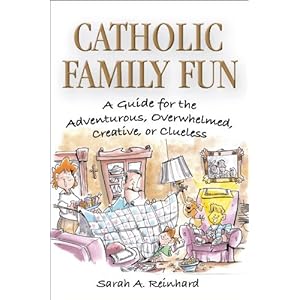Thanks once again to our host Larry D. at Acts of the Apostasy, who is nothing if not capable of punching a man-card.

1.
Darwin reminded me I needed to write a Glock post. No blog is complete until you’ve done that. And look what I brought home from the library the other month, when I needed something completely different to get my mind off life for the weekend:
The boy took one look, and asked, “Why would Barrett write a book about Glocks??” He recognized the name of the CEO of a competitor, because um, because he did. Y chromosome on that child, confirmed.
I pointed him to the inside back cover. “I think it’s a different Barrett.” It is.
2.
Anyway, I enjoyed the book even more than I’d expected. Glock: The Rise of America’s Gun tells the story of Glock Inc. from the time Mr. Glock decided to try his hand at designing the weapon, through it’s rise as a market leader in the US, and into the human resources nightmare that ensued when radical success met original sin. Well told — Paul Barrett is a great story teller, and he explains the technical bits with the detail you need in order to understand the story, but without losing the non-technical audience.
As a business book, it is top-notch. Great look at the talent and plain old good fortune that made the company so successful — including some surprising twists in the gun control movement that helped spur sales and raise margins. Ideologically, Barrett is pretty firmly in the middle of the road on gun topics, and he keeps his politics out of all but a few annoying paragraphs of opinion* near the conclusion — you can just skim and move on.
Language caution: Don’t let the Amazon preview fool you, Barrett’s sources get quoted saying all kinds of words not allowed around my house. It isn’t overdone and I did not find it bothersome as an adult reader, but it’s not a g-rated book by a long shot.
As a morality tale, Glock is a brilliant study in human weakness, and the way that vice unchecked leads to perdition**. Barrett is Mr. Neutral through all of this — neither disturbed nor impressed by Glock’s sales tactics, other than to observe that they worked and they were legal. Turns out men are fairly predictable in certain realms.
–> For this reason, the book makes a great parent-teen book study . . . but only once your boy is already aware of the various perils men need negotiate. I held off on letting Mr. Boy read the book just yet.
3.
Why is it that it only takes 2 seconds to accidentally upload a profile pic on Twitter that, taken out of context, will totally horrify 98% of the people who have often suspected as much . . . but it takes about an hour to get Twitter to accept some innocuous substitute hiding in the same file folder? I suspect a plot to trap the careless.
3.5
Speaking of talented Catholic young men who like guns abridged anime – if you share the same interest, check out this guy: Mattroks 101’s You Tube channel. And with that you know more than I do, for I am utterly out of my depth on all things anime, except maybe you are wondering how I ended up linking such a thing . . .
***
PS: Link day. Help yourself if you are so inclined. Post as many as you want, but only one per comment or the spam dragon will eat you up and I’ll never even know.
*It is possible that if you read here, you secretly enjoy reading annoying opinions. Good for you. There’s three or four paragraphs you’ll just love.
**Not just eternal souls, though of course those are not to be neglected. But also small things teens can appreciate, like your colleagues trying to kill you, stuff like that.








